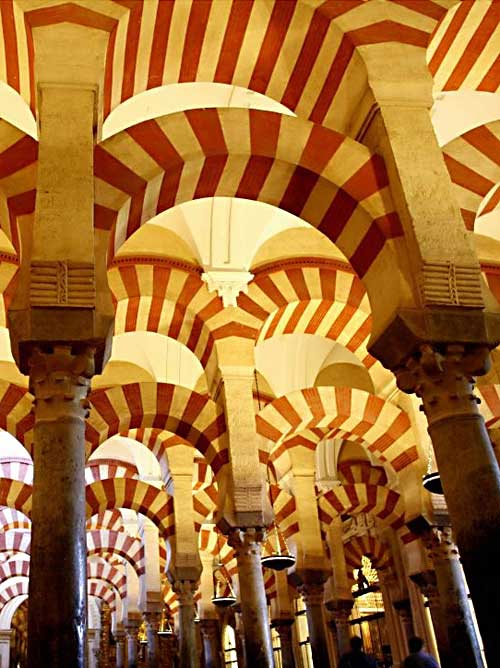Look beyond Italy to the glories of Spanish art, broadcasters urged

From Kenneth Clark's Civilisation to Alan Yentob on Leonardo da Vinci, when it comes to great art, television keeps on returning to the Italian Renaissance.
Now, the art critic Andrew Graham-Dixon has accused broadcasters of ignoring the artistic masterpieces of Spain in their focus on its Mediterranean rival.
In a new series, The Art of Spain, which starts on BBC4 next week, Graham-Dixon redresses the balance by introducing viewers to a rich cultural heritage ranging from the Moorish architecture of the south to baroque paintings inspired by a fanatical Catholicism and some of the most important modern art of the twentieth century.
"There has been very little about Spanish art on television. TV has rather been subject to an innate conservatism in its commissioning patterns," he argued.
"There's an element of, 'let's commission another series on the Italian Renaissance because we know that people like that'," he added.
The presenter revealed that he once heard a head of commissioning for arts programmes at the BBC say: "We do the 10 artists everybody has heard of and then when we've finished we do them again."
That may be an exaggeration, but there is little doubt Italian art has seized the imagination of programme makers for decades.
In his classic 1969 series on Western civilisation, Kenneth Clark devoted whole programmes to the flowering of the renaissance in Urbino and Mantua, and to the work of Da Vinci, Michelangelo and Raphael.
More recently, Alan Yentob explored the life and work of Da Vinci for the BBC in the 2003 series Leonardo, followed in 2004 by a series on Michelangelo.
Part of the problem, according to Graham-Dixon, is the lack of books on the subject compared to the Italian Renaissance.
"One of the ambitions of this series is to say to people you can go to Spain in the same way as you go to Italy, not just in search of topless bars, beer and Benidorm," said Graham-Dixon. "If you're looking up general histories of Spain in the Golden Age a lot of the books are written by the same few people." In The Art of Spain, Graham-Dixon divides Spain geographically and historically. The first programme looks at the impact of Moorish culture in southern Spain.
The second looks at Spain's Golden Age of arts and literature in the 16th and 17th centuries – when its empire was at its height, following a path through the mysticism of El Greco, and Ribera's paintings of suffering martyrs, to the apparent lack of religious belief of Velázquez.
Northern Spain, home to Pablo Picasso, Joan Miro and Salvador Dali, is the focus of the third programme, which looks at the artists' reaction to the fascist regime of General Franco, and explores the work of post-Franco architects such as Santiago Calatrava.
From Italy
MICHELANGELO'S DAVID
Carved from one block of marble, the famous sculpture of the youthful king of the Israelites stands five metres high. The piece was created in just two years, when Michelangelo was in his mid-twenties, and was completed in 1504 – sealing his reputation as one of the great renaissance artists. It now stands in the Galleria dell'Accademia in Florence.
RAPHAEL'S MADONNA OF THE GOLDFINCH
Raphael was famous for his paintings of the Madonna and child. The Madonna del Cardellino or Madonna of the Goldfinch (1505) depicts Mary, an infant Christ and a young John the Baptist. It is currentlybeing restored at the Uffizi Gallery in Florence. The goldfinch, which lives among thorns, symbolises the Passion and Christ's forthcoming violent death.
LEONARDO'S MONA LISA
Da Vinci began painting his enigmatic portrait, also known as La Gioconda, in 1502, but is not thought to have finished it until 1519. The subject has been identified as Lisa Gherardini, wife of Francesco del Giocondo. In his 2003 series Leonardo, Alan Yentob explored the theory that Gherardini was pregnant when she sat for the painting.
From Spain
THE GREAT MOSQUE OF CORDOBA
Art during the Moorish reign in Spain became almost mathematical because idolatrous images are prohibited under Islam. This is reflected in the arches of the Great Mosque of Cordoba, resembling the life-giving palm tree, that seemingly stretch to infinity.
EL GRECO'S DISROBING OF CHRIST
El Greco, or The Greek, was born Domenicos Theotokopoulos in Crete. He came to Spain via Venice and after failing to please Philip II, settled in the religious centre of Toledo. Much influenced by mysticism, his paintings such as The Disrobing of Christ, completed in 1579, drew complaints over the fact that the tormentors were placed higher than Christ and were therefore nearer to heaven.
FRANCISCO DE ZURBARAN'S AGNUS DEI
This still life of a bound lamb awaiting sacrifice (circa 1635-40) is a simple image, expressing the intense spirituality of Zurbaran, one of the great artists of Spain's Golden Age. Zurbaran's eight paintings of saints, thought to be his best works, are held at the monastery of Guadalupe
Join our commenting forum
Join thought-provoking conversations, follow other Independent readers and see their replies
Comments
Bookmark popover
Removed from bookmarks